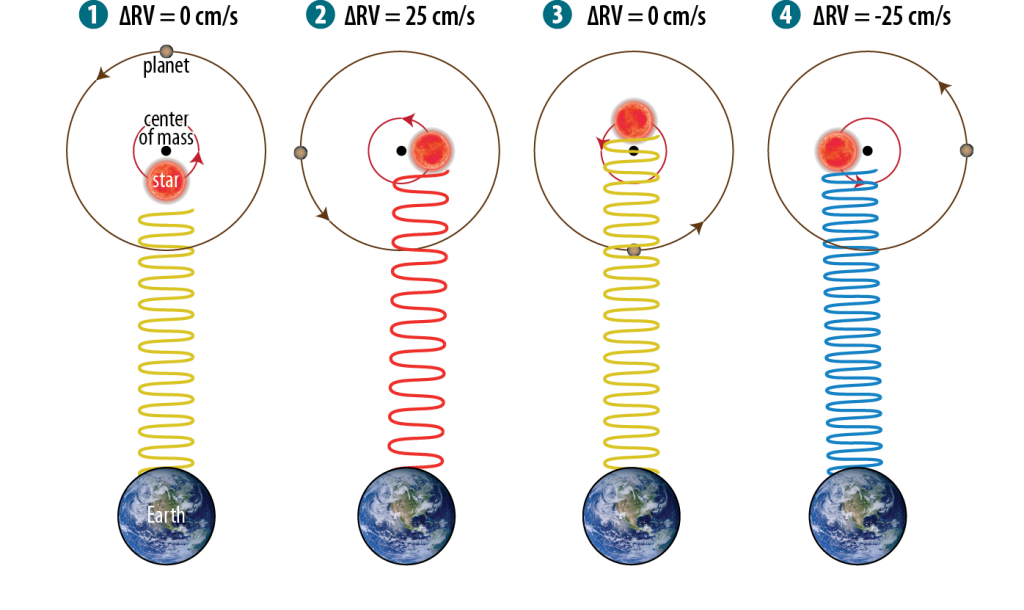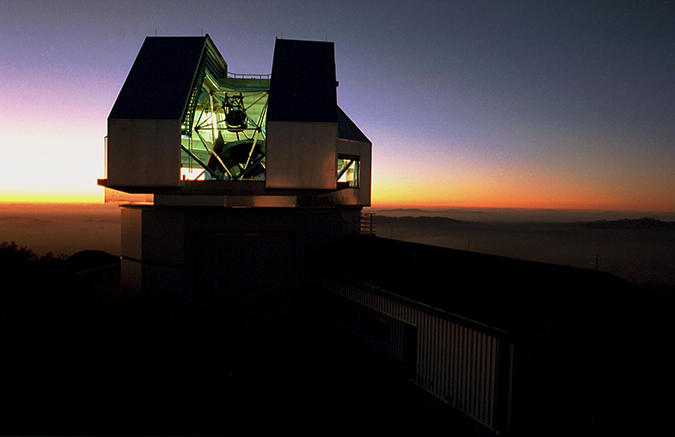NEID is an astronomical spectrograph being developed as part of a joint effort between NASA and the NSF called NN-EXPLORE, which seeks to provide the astronomical community with a state-of-the-art spectrograph dedicated to high-precision Doppler observations of exoplanets around nearby stars. It will be deployed in 2019 on the 3.5-meter WIYN Telescope at Kitt Peak National Observatory in Arizona.
The name NEID is derived from the word meaning “to see” in the native language of the Tohono O’odham, on whose land Kitt Peak National Observatory is located.
NEID will search for exoplanets by using the Doppler, or Radial Velocity (RV), effect. As a planet orbits its star, it exerts a tiny gravitational pull on the star, causing the star to “wobble.” Just as a moving siren causes the pitch heard by a stationary observer to change, the star’s motion causes the absorption lines in its spectrum to shift in wavelength very slightly. An excellent animation of the effect may be seen here. NEID will have a baseline RV measurement precision of 27.5 centimeters per second—a little more than the typical crawling speed for an infant!

A schematic of the Doppler effect: as the star wobbles under the gravitational influence of its planets, NEID measures the resulting wavelength shifts in its spectrum.
NEID will support a number of cutting-edge scientific endeavors, mainly related to the discovery and study of exoplanets. Its measurement precision will enable the discovery of Earth-mass planets in the so-called “habitable zones” of the nearest stars, where liquid water—and perhaps life—can exist on their surfaces. These “Earth twins” will be prime targets for space-based exoplanet characterization missions, which will obtain spectra and images of nearby planets. NEID will also provide highly precise masses and densities for transiting planets discovered by the upcoming TESS spacecraft. Such measurements are critical for better understanding the composition, formation, and dynamical evolution of exoplanets.
The NEID instrument is designed as a complete radial velocity system, incorporating an ultra-stable instrument environment, state-of-the-art optics and fiber optics, a world-class wavelength calibration system, and cutting-edge knowledge of the stellar activity that can contaminate Doppler measurements if not properly treated. This website will detail each of these topics in future posts.

